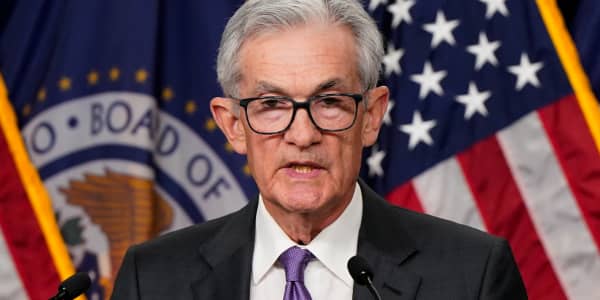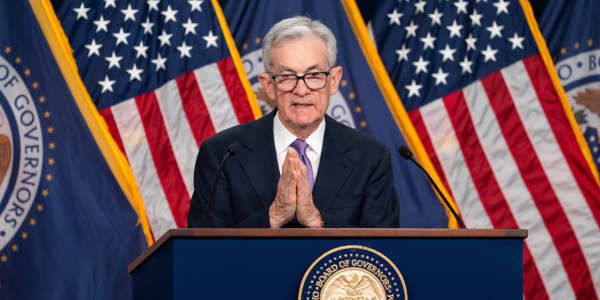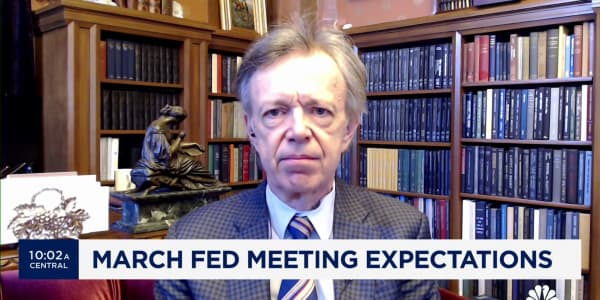
Janet Yellen will chair her first meeting of the Federal Open Market Committee with broad agreement on Wall Street over the outlook for policy this year and a forecast for stronger U.S. growth this year and next. But the March CNBC Fed Survey finds sharp divisions over what happens to Federal Reserve policy in 2015 and a cloud of geopolitical concern hanging over the outlook.
All but one of the 41 respondents, who include economists, fund managers, and strategists, see the Fed tapering at the meeting this week, and 81 percent expect tapering at each of the remaining meetings this year.
That's up from 72 percent in January. On average, respondents see the Fed tapering by around $10 billion at each meeting. A strong 59 percent agree with the $10 billion pace of tapering, with 27 percent saying the Fed should go faster and 10 percent saying slower.
The Fed currently is purchasing $65 billion in assets every month to try and drive down interest rates and stimulate the economy. It has signaled it would reduce or taper its purchases by $10 billion at each meeting this year, which would effectively ends it purchase program by December.
(Read more: US manufacturing output posts largest gain in six months)
"The strong February jobs report gives ammo for the Fed to continue tapering its stimulus program by $10 billion a month through 2014," Robert Morgan of Fulcrum Securities wrote in response to the survey.
There are greater divisions emerging over what happens next year, however. About 60 percent see the Fed hiking interest rates in 2015 and 40 percent look for it to wait until 2016 or later. While 60 percent see the Fed maintaining its large balance sheet, now at $4.1 trillion and growing, 40 percent see the Fed reducing it, which can happen either through asset sales or by not replacing bonds that mature. Those who think the Fed reduces the size of its balance sheet in 2015, look for an average decline of $108 billion in 2015.
An overwhelming 95 percent of respondents think Yellen and the FOMC will scrap the guidance that says the Fed will consider raising interest rates once the unemployment rate drops to 6.5 percent, but they are unclear how the Fed fixes the problem. The rate has already declined to 6.7 percent and Yellen and other Fed officials have said that it does not tell the full story of excess slack in the labor market and the need for continued low rates.
"They will use Yellen's first press conference to move away from the 6.5 percent unemployment threshold," said Diane Swonk of Mesirow Financial.
About half of respondents think the Fed will drop a numerical target all together. A fifth of respondents think the threshold will be replaced by another number, with the average being 5.6 percent.
"Fed policy is not going to be bound by single hard numeric unemployment targets, but by the Fed's judgment of the strength of the labor markets," wrote Rod Smyth of Riverfront Investment Group.
Tony Crescenzi of Pimco called removing the threshold, together with an end to the bond-buying program, "a recipe for a steep yield curve, because longer maturities tend to bear the burden of uncertainty."

Respondents to the survey also see economics new risks on the horizon, with most of them being the foreign horizons of China and Ukraine. "The financial markets are too complacent over a tail risk that could turn into a new 'cold economic and financial war,'" wrote Allen Sinai of Decision Economics.
(Read more: Fed meets amid market skittishness)
Guy LeBas of Janney Montgomery Scott wrote that growing evidence that China and other emerging markets are slowing or even contracting is "a major impediment to global and thereby U.S. economic growth right at the time that the domestic situation is supposedly looking better."
Still, average growth is seen picking up from 2.3 percent in 2013 to 2.8 percent in 2014 and 3 percent in 2015. The weather is seen subtracting about six-tenths of a point off growth in the fourth quarter of 2013 and the first quarter of 2014, but it will recapture four-tenths of that loss in the second quarter of this year.
Wall Street is reasonably comfortable with its outlook for Fed policy. Just a quarter say the risk is that the Fed is more hawkish than they forecast, a third say the risk is for a more dovish Fed. Forty percent say the risks are balanced. That's up from 35 percent in the January meeting, the last one chaired by Yellen's predecessor Ben Bernanke.
(Read more: Markets hang in the balance ahead of Fed decision)
In addition, 68 percent say the Fed's communication is somewhat or very clear and credible, suggesting Yellen does not have to overhaul guidance to markets beyond the problem with the unemployment threshold.
—By CNBC's Steve Liesman. Follow him on Twitter @steveliesman





